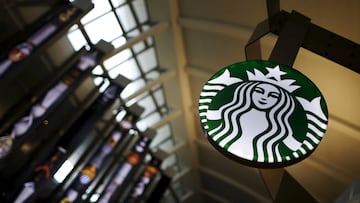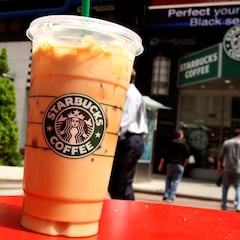How did pumpkin spice drinks become so popular?
Pumpkin pie is one of Americans’ favorites, but in recent years its flavor has found its way into all forms of products. Here’s what started the trend.

Pumpkin spice, or pumpkin pie spice, is “a mixture of usually cinnamon, nutmeg, ginger, cloves, and often allspice that is commonly used in pumpkin pie,” according to Merriam-Webster. The authority on the American English language officially added the term to its dictionary in 2022.
In part that was the result of the expansion of the seasonal flavor of autumn into countless products over the preceding two decades. While pumpkin pie is one of American’s favorites, according to YouGov polling second only to apple pie, it was its inclusion in a non-pastry product that would launch its popularity into the stratosphere.
How did pumpkin spice drinks become so popular?
Pumpkin spice in one form or another gained popularity as soon as colonists began to enjoy the sweet gourd native to the Americas in scrumptious pastries. The modern universal version of it came about in 1934 when McCormick and Company introduced the first commercial pumpkin pie spice.
However, the pumpkin spice revolution was unleashed in 2003 inside Starbuck’s secure research and development space called the “Liquid Lab,” which is located on the 7th floor of the coffee powerhouse’s Seattle headquarters. There an assembled group of researchers “sampled a forkful of pumpkin pie, followed by a sip of hot espresso to identify the flavors from the pie that best complemented the coffee,” according to the company.
Out of that in April that year was born the ‘Pumpkin Spice Latte’ also known by its three-letter beverage code ‘PSL’. Starbucks tested what would become a perennial favorite at 100 stores in Vancouver, BC and the District of Columbia. The following year it was launched across the US and Canada. Since then it has sold hundreds of millions of Pumpkin Spice Lattes.
Not to miss out on the popularity of the trending taste of fall, other brands incorporated pumpkin spice into their own food and beverage products and even into things like deodorants and scented candles. Twenty years after going beyond pies, sales of pumpkin-spiced products surpassed $800 million, according to NielsenIQ data.
While the number of products with pumpkin spice in that report was down 5% compared to previous years, estimated to be more than 3,000, as well as other sweet flavors making gains, its popularity is not expected to wane much in the coming years.
Lynn Dornblaser, director of innovation and insight at Mintel Consulting told Food & Beverage Insider that its proliferation across so many categories beyond just coffee products “illustrates the strength of the flavor,” and that pumpkin spice “is not going anywhere.”
Related stories
Lee McPheters, a research professor and director of the JPMorgan Chase Economic Outlook Center in Arizona State University’s WP Carey School of Business explained to ASU News that the obsession with pumpkin spice comes down to “familiarity and comfort.”
“Like the smell of fresh-cut Christmas trees, pumpkin spice sends a message of familiarity and comfort, and that is something everybody likes,” he said.



Complete your personal details to comment